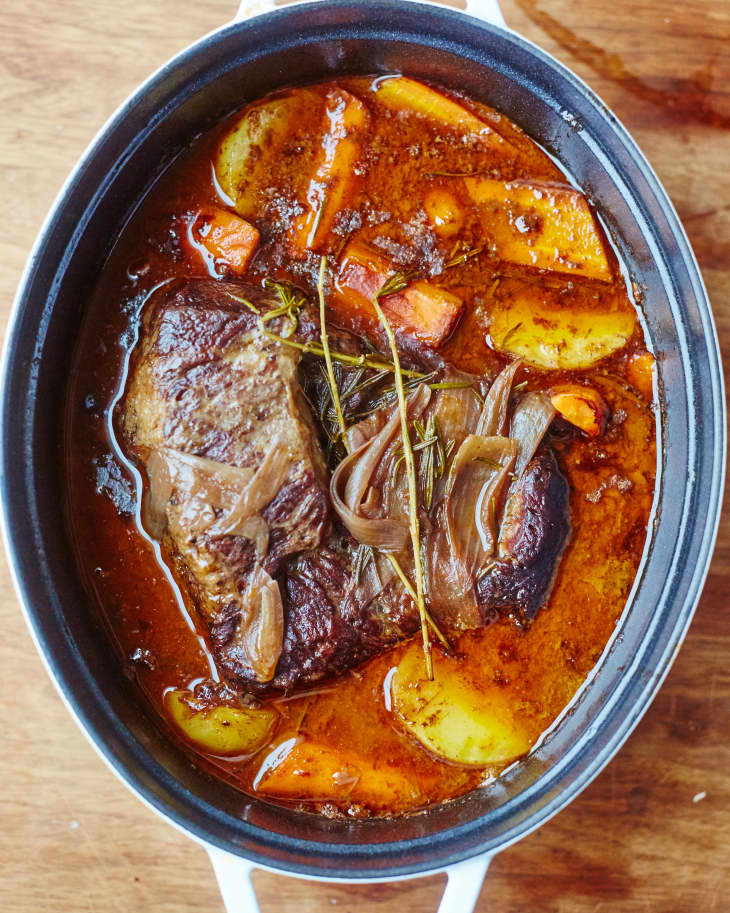The Best Cuts of Beef for Perfectly Tender Pot Roast
Even growing up in a Chinese-American family that predominantly ate Chinese food, I knew what pot roast was. I’d seen it mentioned on television and read enough about this classic American dish to know that it was homey and delicious.
Now that I have my own young family to feed, I truly understand why pot roast is so popular — it’s inexpensive, yields a ton of servings, and makes the whole house smell delicious and warm. You can easily adapt it to your kitchen, it works just as well on the stovetop in a Dutch oven as it does in the slow-cooker, or even in the oven. Although it’s pretty hard to screw up pot roast, there is one big factor that will make or break the dish: choosing the right cut of beef.
What Is Pot Roast?
Pot roast isn’t really a specific recipe or cut of meat — it’s more of a method. Take a big cut of tough beef, brown it if you can, then cover and slow cook it with aromatics and liquid (stock, broth, wine, or water) until meltingly tender.
Tough Meat Makes Good Pot Roast
When thinking about how pot roast is made, time and temperature really define the process. Pot roast is basically a braise that cooks at a low temperature for a long period of time.
So what kind of meats work best then? The tougher cuts! We’re talking about lean cuts with lots of connective tissue and very little fat that see a lot of movement and action on the animal — ones that would be like chewing shoe leather if you just seared or grilled it quickly.
When cooked properly, the high amount of collagen in tough cuts eventually breaks down into gelatin, tenderizing the meat, making it succulent, and adding richness and body to the braising liquid to turn it into a velvety sauce.
Chuck
This cut is from the low part of the neck, the shoulder, and upper front legs, all of which are key for both support and movement. In other words, these are very hard working parts of the cow. Chuck packs a ton of rich flavor, but is a little fattier than brisket or round. Chuck roasts usually weigh between 2 and 3 pounds and can be sold as ‘shoulder steak’, ‘boneless chuck roast’, ‘chuck shoulder pot roast’, ‘chuck seven-bone pot roast’, or ‘beef chuck arm’.
Brisket
Leaner and tougher than chuck, brisket is from the breast or lower chest of the cow. It’s a large, rectangular cut (typically about 13 pounds) that is often split into two smaller cuts — the flat cut (leaner) and the point cut (more fat). Either cut is wonderful for pot roast, though may require a bit more time to tenderize. The meat will hold together more than other cuts, even after a long braise, and is best sliced against the grain for maximum tenderness.
Round
Sourced from the hind legs and rump of the cow, round is leaner than chuck or brisket and doesn’t quite have the same beefy punch, but has the advantage of being pretty inexpensive. Look for ‘rump roast’, ‘round roast’, ‘bottom round roast’ or ‘outside round’. Avoid ‘top round’ when making pot roast as it’s better suited for a thinly-sliced preparation like roast beef.
